Rural & Agribusiness
Based in the productive Bay of Plenty, Holland Beckett is perfectly placed to advise on rural challenges and opportunities. Our team of experts aim to ensure your rural goals are achieved in a friendly, knowledge and proactive way.
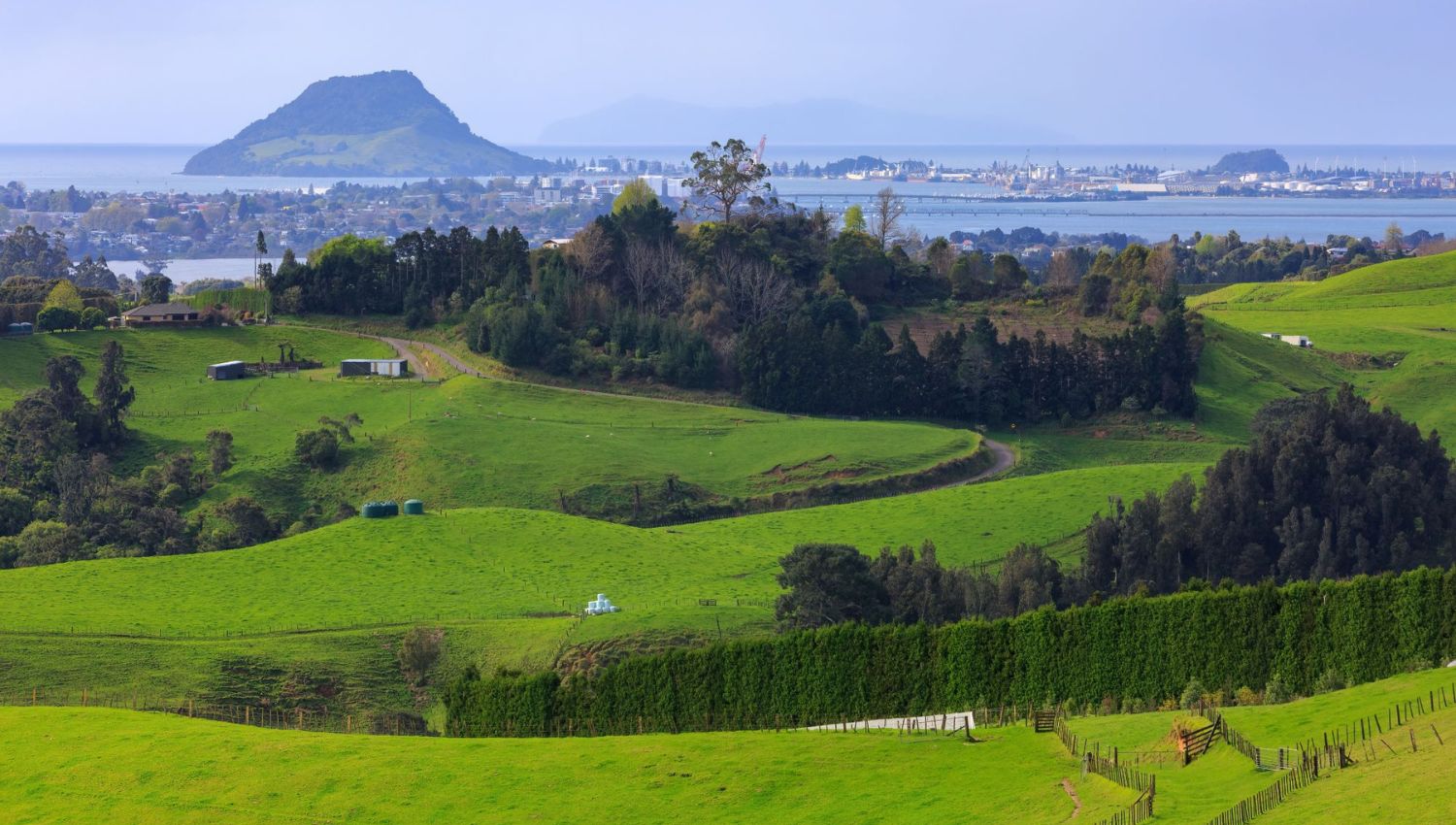
The rural sector continues to provide a significant contribution to New Zealand’s economy, but at the same time is coming under increasing scrutiny, legislative changes and social pressure.
We are also seeing new opportunities for rural landowners, including in relation to solar farms (see more on our Energy page). It is paramount that you obtain sound advice when faced with these challenges, and to ensure you can capitalise on the huge opportunities the sector can provide.
Our Experience Includes:
- Buying, selling and leasing of kiwifruit orchards
- Orchard management and development agreements
- Packhouse and other supply agreements
- Tendering for kiwifruit license
- Rural subdivisions and easements
- Forestry rights and harvesting agreements
- Sharemilker agreements and dairy farm transactions
- Estate planning and structuring for rural families and entities
- Resource consenting and prosecution work under the RMA
- Environmental reforms for the rural sector Solar farm agreements (see more on our Energy page)
- Meeting the requirements of the Emissions Trading Scheme
- Advising on related employment matters
Related News & Resources
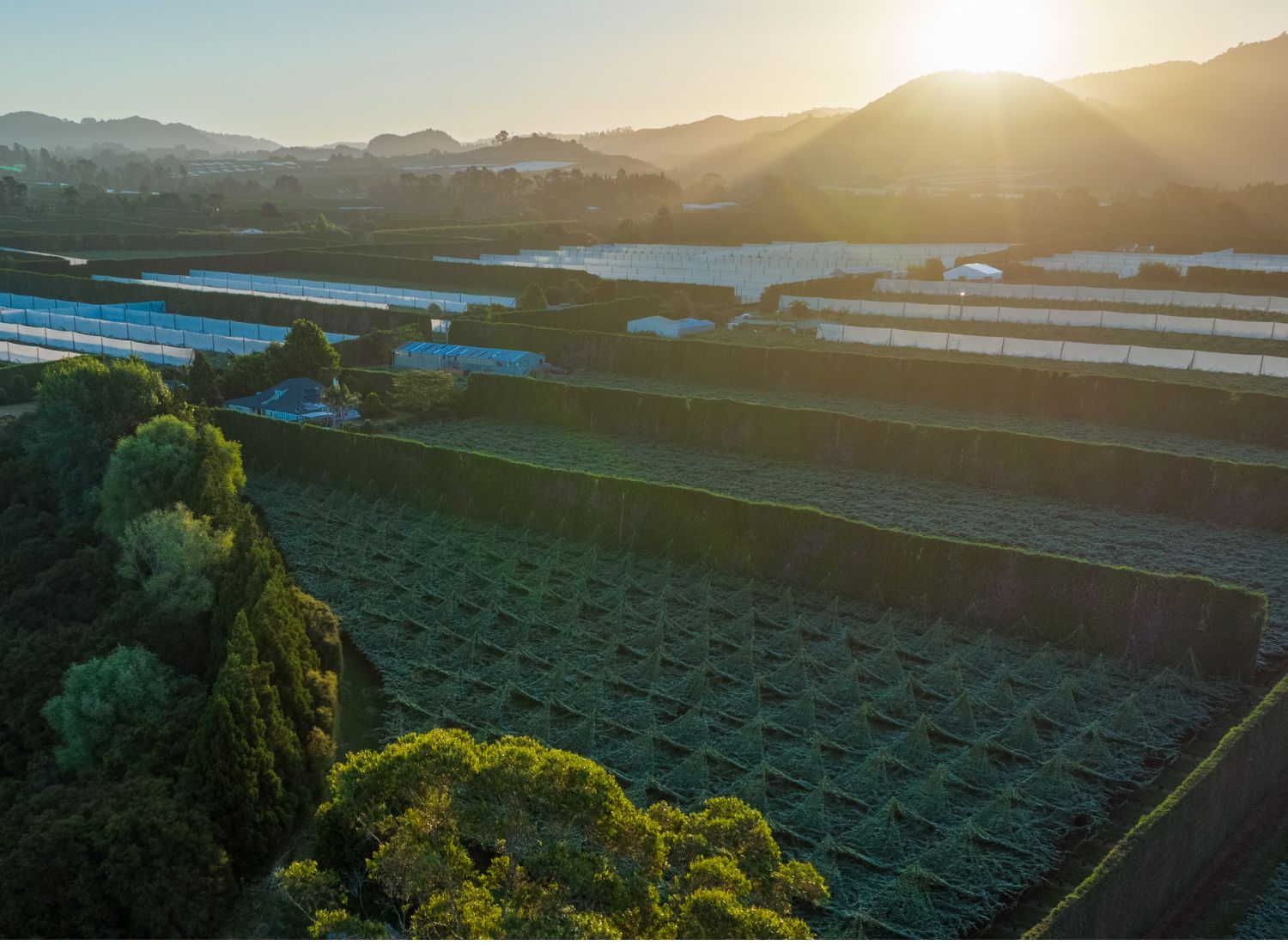
Employment Law for Kiwifruit Growers
Free Employment Law Workshop for Kiwifruit Growers
Join our expert employment lawyers Jeremy Sparrow and Sophie Law for a free, informative session designed specifically to assist kiwifruit growers to best manage workforces and navigate the complexities of employment law.
Drinks and nibbles included.
Tuesday 18 November 2025
From 5:00pm for a 5:30pm start
Holland Beckett
Level 2, Northern Quarter, 45 The Strand, Tauranga
We will share insights on topics including:
Different types of employment for seasonal workers
Using piece rates correctly
Holidays Act compliance & managing public holidays
90-day trial periods
Restructuring permanent roles
Addressing performance and disciplinary issues
Q&A
Please RSVP by Friday 14 November to Karla Sweeney karla.sweeney@hobec.co.nz

Bay of Plenty Young Grower of the Year Awards
Holland Beckett is a longstanding sponsor and supporter of the Bay of Plenty Young Grower of the Year awards.
Our Bay of Plenty location and the importance of horticulture to the region, means it\'s only natural for us to support the future leaders of the horticulture industry.
The Young Grower Awards are an opportunity for local young growers to develop key skills and build connections as they embark on what will likely be very successful careers. Holland Beckett sponsor the final challenge, the speech competition, where the competitors have to speak to a room of hundreds of poeple attending the gala dinner - a little different to other competition modules which test practical skills and on-the-spot problem solving in horticulture, but no less challenging.
Senior Solicitor, Grace Titter, joined the judging panel.
Congratulations to this year\'s Holland Beckett Speech Competition winner, Phoebe Scherer - who also took out the overall Bay of Plenty Young Grower of the Year title.
The event was a great success, celebrating and supporting an industry which is so vital to the region and communities within it.

Meet Holland Beckett’s rural law experts at Fieldays
Perfectly placed to advise on rural legal challenges and opportunities, our rural law experts from Tauranga, Whakatāne and Rotorua are headed to Fieldays this year.
Fieldays is the Southern Hemisphere’s largest agricultural event and the ultimate launch platform for cutting edge technology and innovation. With around 1000 exhibitors showcasing rural products and services, Fieldays draws over 100,000 visitors each year who are seeking the best deals and first-hand information from the Primary Industry\'s most reputable suppliers and organisations. We\'re looking forward to being a part of this years event.
Come and chat to the team - Rural Living marquee - site RM148.
On site we will have expert lawyers covering all areas of the rural lifestyle, including:
Asset, estate and succession planning
Rural property law - whether it be buying, selling, subdividing, leasing, financing and operating rural property, farms and orchards.
Litigation and dispute resolution in a rural context
Environment and planning - helping to navigate increasingly complex regulatory environments such as resource consents and compliance, freshwater, significant natural areas, land development, farming regulations, reforms
Renewable energy and solar specialists - we guide and advise clients on every stage and legal aspect of an energy project, from planning and development to operation
Employment law for farms and farmers, including Health and Safety
Horticulture - from sale and purchase of orchards, to kiwifruit licences, boundary adjustments, packhouse agreements, orchard development and management agreements
Forestry rights and harvest agreements, transportation and logistics contracts, Emission Trading Scheme
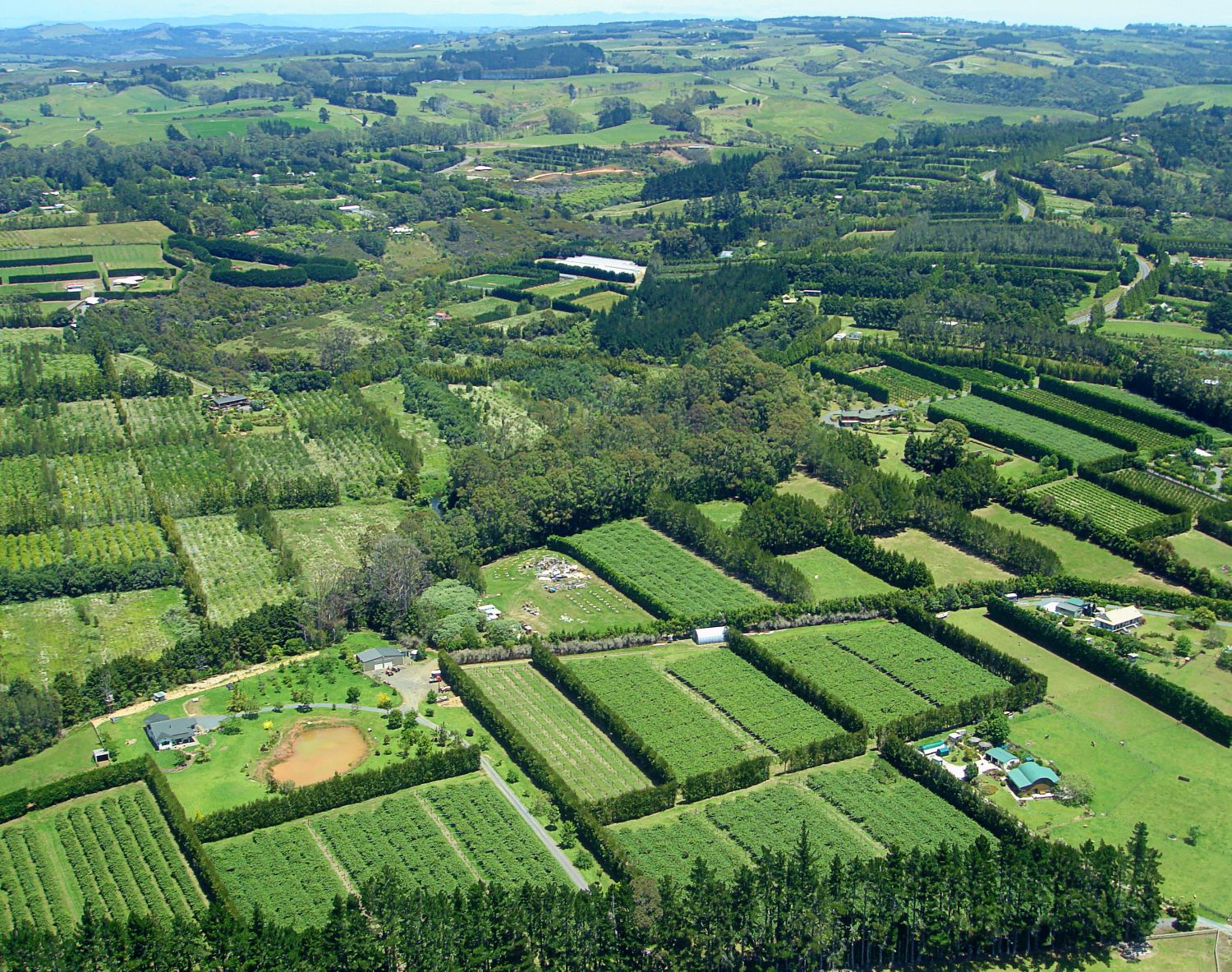
Stuck in the Highly Productive Mud
The Environment Court recently released its decision in Blue Grass Limited v Dunedin City Council [2024] NZEnvC 83 which deals with the definition of Highly Productive Land (HPL) in the National Policy Statement for Highly Productive Land (NPS-HPL).
The Court has found that it is not open to applicants in consent processes to challenge the Land Use Capability (LUC) of their land as mapped by the New Zealand Land Resource Inventory (NZLRI), even if more detailed site investigations conclude that land is not LUC 1, 2 or 3. Put another way, land zoned rural that the NZLRI has mapped as LUC 1, 2 or 3 is ‘stuck’ as HPL for the time being, until regional councils introduce changes to their regional policy statements.
The Environment Court was tasked with answering the question of whether more detailed mapping undertaken by consent applicants since the commencement of the NPS-HPL (17 October 2022) using the LUC classification system could prevail over the identification of land as LUC 1, 2 or 3 as mapped by the NZLRI. This would in turn determine whether land is classified as HPL. The Court’s answer was no.
The NPS-HPL provides that regional councils must undertake mapping of HPL within its region and as soon as is practicable (but not later than 3 years from the commencement date of the NPS-HPL) notify a proposed regional policy statement that identifies all HPL by way of maps.
Regional councils are still undertaking this mapping and until this is completed cl 3.5(7) of the NPS-HPL sets up the interim definition of HPL as being land which “at the commencement date” of the NPS-HPL is (with some exclusions):
(i) zoned general rural or rural production; and
(ii) is identified as LUC 1, 2 or 3.
Dunedin City Council’s position was that the qualifier of “at the commencement date” in cl 3.5(7) means that the LUC mapping must have been in place at the commencement date. Its submission was that this creates a holding position for protection of HPL until the Otago Regional Council completes its long term mapping and undertakes a change to the RPS as required by clauses 3.4 and 3.5 of the NPS-HPL. That argument was accepted by the Court – the interim definition was intended to create a holding position protecting all land that may be classified as HPL by regional council mapping, until that mapping does occur.
Ultimately, what this means is that landowners and consent applicants are unable to undertake their own mapping of specific sites to seek to lessen the LUC of their land and therefore remove it from an HPL classification, in turn easing the consenting pathway. They must instead wait for the relevant regional council to notify a change to its regional policy statement relating to HPL, and then participate in that process if they seek to argue that their land is not HPL.
Alternatively, land owners and consent applicants will need to rely solely on the exceptions for use and development of HPL contained in cl 3.6, 3.8, 3.9 and 3.10. We expect applicants will seek to test the boundaries of these exceptions in light of this decision. Knowing the LUC classification of rural land as per the NZLRI mapping will have increased importance for purchasers considering potential development opportunities, given the restrictions the NPS-HPL contains and its lack of ‘wiggle room’.
If you require any assistance with or wish to discuss this decision or the NPS-HPL generally, please feel free to get in touch with a member of our specialist environment law and resource management team.

The Emissions Trading Scheme review was scrapped – what’s happening with forestry?
Last year, the New Zealand Emissions Trading Scheme (ETS) was brought under the spotlight after a High Court hearing and Labour government led review.
We have previously explained the ETS here. The ETS is governed by the Climate Change Response Act 2002 (the Act), putting a price on carbon emissions which certain industries must participate in. Every tonne of carbon emissions costs a credit, called a New Zealand unit (NZU). Participants who are emitters need to buy and surrender NZUs to the government to account for their emissions. NZUs can be invested or traded on the NZ ETS market. In 2021, auctioning was introduced where the Government sells NZUs to successful bidders.
Auctioning allows the government to control the supply of NZUs, and therefore the emissions of participants, to meet its emissions reductions plan. The plan outlines the strategies and policies intended to achieve the emissions budget for 2022-2025. Five year emissions budgets are mandated by the Act to assist New Zealand’s overall goal of net-zero greenhouse gas emissions by 2025.
The Climate Change Commission’s advice regarding Amendment Regulations to the Act in July 2022 recommended allowing NZU prices to increase, and to maintain consistency with the emissions reductions plan. The Labour government declined to follow this advice in the Climate Change (Auction, Limits, and Price Control for Units) Amendment Regulations 2022, instead depressing the market, by artificially reducing the price of NZUs in the emissions reduction plan, leading to plummeting NZU prices and a judicial review.
On 13 July 2023, the High Court found that Minister for Climate Change James Shaw made an error with his recommendations concerning the unit level and price control settings for 2023-2027 adopted in the Amendment Regulations. The Minister admitted not complying with the relevant requirements. The settings favoured by Cabinet did not accord with the 2025 target, and did not accord with or justifiably deviate from the emissions budgets and New Zealand’s contribution under the Paris Agreement. The Minister was directed to reconsider the decision.
Around this time, the Labour government launched a review of the ETS on 19 June 2023. A summary of that review can be found here. There was consideration given to forestry restrictions, to drive up the price of NZUs, creating uncertainty in the future of the forestry market.
The Government failed to sell the 15 million NZUs it made available during the four ETS auctions in 2023, as the clearing price was not reached. The units were consequently removed from the market. The failure to clear was largely due to the significant excess of units currently in circulation.
On 6 December 2023, the day of the final auction of 2023, the honourable Minister Simon Watts put out a press release. He said that the new coalition government is scrapping Labour’s ETS Review. They want a “strong and stable” ETS that gives “businesses certainty and confidence”. The Minister held these as the reasons of the NZU auction failure. There was no suggestion of another review.
On 12 December 2023, the Minister put out a second press release. The Government is considering a report from the Climate Change Commission as they prepare a second emissions reduction plan and have started “work on doubling renewable energy production”.
What does that mean for forestry?
Our current Government’s focus on “certainty” and “business” implies no significant changes will be made to the ETS in relation to forestry for the foreseeable future (presumably, within the next three years at least). Renewable energy seems to be the new government’s vehicle on the path to solving issues with the ETS.
Forestry investors, and relevant stakeholders, can put to rest any concerns related to Labour’s review. It appears as though forestry is not a key focus that the current Government has in relation to the ETS. For now, all obligations and legal implications around carbon credits and offsetting remain unchanged. If you have any questions around these obligations, please contact our expert team here.
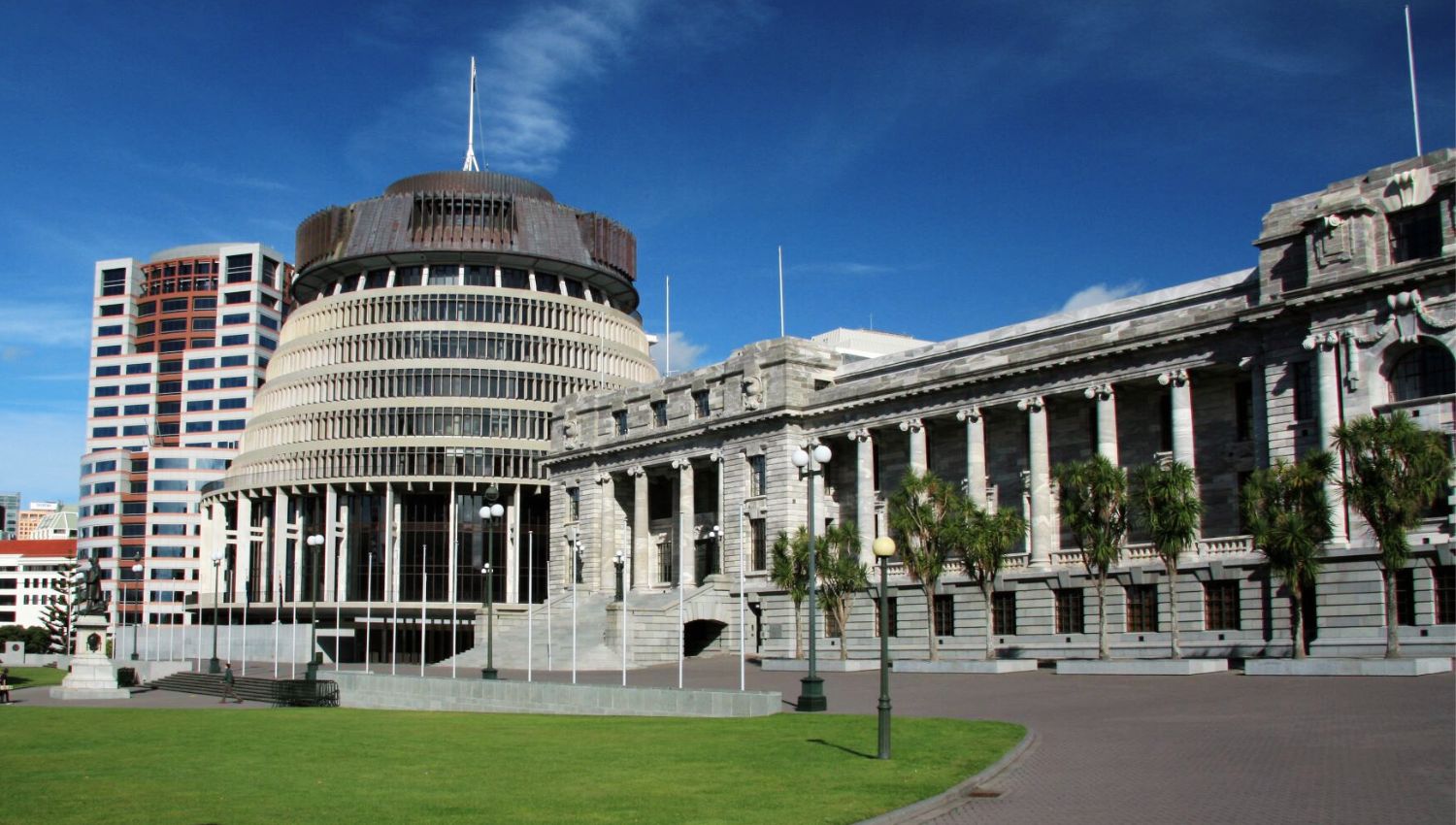
New government and a new round of RMA reforms to go with it
The new government’s coalition agreements gives a clear indication of its plans in relation to its resource management legislative reform for the next three years. With Labour’s legislation to be scrapped in favour of a return to the Resource Management Act 1991 (RMA) (with some amendments), and further significant reform on the horizon, it is going to continue to be an interesting and transitional time in the RMA space.
The coalition agreements are clear, as National was prior to the election, that the Natural and Built Environment Act 2023 (NBEA) and the Spatial Planning Act 2023 will be repealed by Christmas, and the RMA will be reinstated, with amendments. These amendments are intended to ensure that it is easier to consent new infrastructure (including renewable energy projects), streamline the plan preparation process, and importantly establish a ‘fast track, one stop shop’ for consents and permitting processes for regional and national projects of significance (the process will involve a referral by Ministers for suitable projects). This fast track process is intended to be introduced for first reading in the first 100 days of the Government, no doubt to replace the fast track process currently contained in the NBEA.
In the longer term, the intention is for the RMA to be replaced with new resource management laws that are based on enjoyment of property rights as their guiding principle. What this will look like remains unclear, but is likely to mean less regulation and control on what can be done as of right.
Also under review will be the National Policy Statement on Indigenous Biodiversity, with a particular focus on reconsidering the mapping of significant natural areas that is required by the current policy statement. The National Policy Statement on Freshwater Management and the National Environmental Standards on Freshwater Management will be replaced, to “better reflects the interests of all water users”, putting the focus squarely on use rather than preserving and restoring where degraded the state of water bodies, as is the current priority.
There is a strong focus on infrastructure, with a National Infrastructure Agency to be established to coordinate government funding, connect investors with New Zealand and improve funding, procurement and delivery to prioritise projects of regional and national significance. All work on Three Waters will stop immediately, with assets to be returned to council ownership.
A review of all legislation that refers to the ‘principles of the Treaty of Waitangi’ will also be conducted, with all such references to be either repealed or replaced with specific words relating to the relevance and application of the Treaty.
Interestingly, the Minister for the Environment is now a Minister outside of Cabinet – Penny Simmonds, with Act’s Andrew Hoggard, the Associate Minister, also outside of Cabinet. The more powerful Ministerial positions who will deliver RMA reform look to be Chris Bishop who will take the new Ministerial position of Minister Responsible for RMA Reform as well as Minister of Housing and Minister for Infrastructure, and will be supported by Act’s Simon Court who will also be a Minister Responsible for RMA Reform. Shane Jones will be Minister for Resources (a new position).

National Built and Environment Act 2023 and the Spatial Planning Act 2023 – what is in effect (at least for now)?
The National Built and Environment Act 2023 (NBEA) and the Spatial Planning Act 2023 (SPA) were given Royal Assent on 24 August 2023 and will repeal and replace the Resource Management Act 1991 (RMA). While the complete transition to the new system is expected to take more than a decade, parts of the NBEA are already in force:
Fast Track Consenting
The NBEA’s new fast track consenting process has now come into effect. Applicants can now seek ministerial referral of projects that meet a set of eligibility criteria (which relate to infrastructure and housing activities). If the referral is accepted, applicants can apply to the Environmental Protection Authority (EPA) for resource consent. Expert consenting panels then decide on the substantive applications and may set conditions on projects before they go ahead.
Compliance, Management and Enforcement
New compliance and enforcement tools have come into force and include the following:
fines for non-compliance with consent conditions have increased:
- $300,000.00 to $1,000,000.00 for individuals; and
- $600,000.00 to $10,000,000.00 for companies.
changes to abatement notice provisions which allow abatement notices to be issued for a breach of consent notices and covenants imposed by the conditions of a resource consent.
new powers in relation to excessive noise which permit enforcement officers to issue an excessive noise direction which requires the noise to be immediately reduced to a reasonable level.
Contaminated Land
The ‘polluter pays’ principle applies from the day after Royal Assent and sets a presumption that polluters are to bear the costs of managing pollution to prevent damage to human health and the environment in relation to contaminated land. The EPA and the relevant local authority are empowered to recover all actual and reasonable costs from the polluter.
Shorter Term for Freshwater Resource Consents
Most new freshwater-related consents will have a new time limit on how long they last. The aim is to ensure freshwater resources are not locked in for long periods before regions make decisions in their NBE plans about how to allocate freshwater in their areas.
The maximum duration applies to resource consents to take, use, dam, or divert freshwater. It also applies to consents for discharging any contaminants into freshwater or onto land where it can enter freshwater.
The maximum duration can be no longer the 5 years after allocation methods in a region’s first NBE plan take effect. Once the transition to the new system has been completed, then the maximum duration will be 10 years (rather than 35 years under the RMA).
Freshwater Planning Instruments
The NBEA amends section 80A of the RMA to widen the meaning of a ‘freshwater planning instrument’ and to change what instruments must (or may) use the freshwater planning process.
Aquaculture
The Minister for Aquaculture now has extended powers to suspend resource applications, make regulations and allocate aquaculture space.
However, following the recent election and a new National led government, we may in store for further changes to the new system (including the new system being scrapped altogether) before the end of the year.
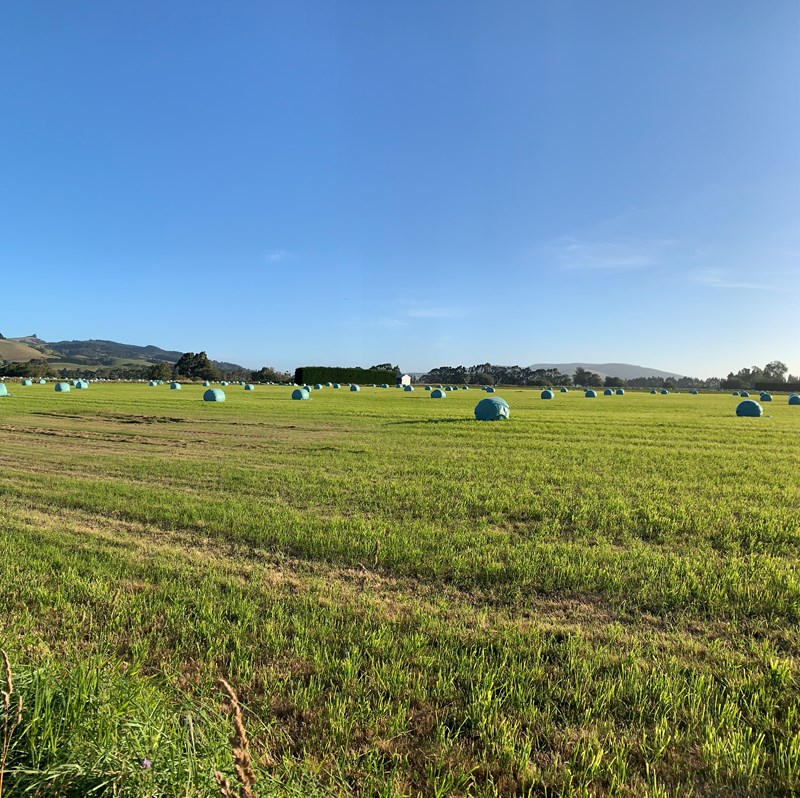
Amendments to the National Policy Statement for Highly Productive Land (NPS-HPL)
The NPS-HPL came into effect on 17 October 2022. Since then, two issues have been identified about its restrictions on non-land-based uses and development. These are:
The lack of a clear consent pathway for construction of new “specified infrastructure” (which includes renewable energy, such as solar farms) on highly productive land (HPL) in clause 3.9(2)(j)(i) of the NPS-HPL; and
The lack of a clear consent pathway for development and relocation of intensive indoor primary production and greenhouses on HPL.
The discussion document can be found here: Potential-amendments-to-the-NPS-HPL-discussion-document.pdf (environment.govt.nz)
Consent Pathway for “Specified Infrastructure”
The proposed change is to clause 3.9 of the NPS-HPL which states that:
3.9(2) A use or development of HPL is inappropriate except where at least one of the following applies to the use or development…
(j) It is associated with one of the following, and there is a functional or operational need for the use or development to be on the HPL:
(i) The maintenance, operation, upgrade, or expansion of specified infrastructure:
(emphasis added)
As currently worded, the NPS-HPL does not provide a clear consent pathway for construction of specified infrastructure on HPL, only its “maintenance, operation, upgrade or expansion”’. This limits the ability to construct new specified infrastructure on HPL at pace and limits certain providers (such as renewable energy generators or installers of fibre who are not requiring authorities).
The Government has identified two options to address this issue and has indicated that it considers that the amendment in the second option is necessary. The options are as follows:
Maintain the status quo which would allow time for the NPS-HPL to be given effect to in plans, policy statements and consent decisions (this would likely take some time); or
Amend clause 3.9(j)(i) to include the word ‘construction’.
The amendment suggested in the second option (which is the Government’s preferred option) would provide a clear consent pathway for construction of new specified infrastructure on HPL.
Consent Pathway for Intensive Indoor Primary Production and Greenhouses
The NPS-HPL also does not provide for a clear consent pathway for development of new intensive indoor primary production and greenhouses. To address this issue the Government has suggested that the NPS-HPL could be amended to provide for a pathway for developing and relocating intensive indoor primary productions on HPL, but has identified that this option is misaligned with the policy objectives of the NPS-HPL. No preference was given to this option over keeping the status quo.
The Government is seeking submissions and feedback on the proposed options. Submissions close on 31 October 2023. If you have any queries regarding the proposed amendments to the NPS-HPL or if you wish to make a submission please do not hesitate to contact us.

Submissions invited on Emissions Trading Scheme Reform
The Government has launched consultation on potential reforms to the Emissions Trading Scheme (ETS). If adopted, these may significantly affect the benefits of having forest on your land in the ETS. As we’ve previously explained in our crash course on the ETS, the ETS was set up under the Climate Change Response Act 2002. It aims to reduce the amount of greenhouse gas New Zealand emits into the atmosphere by requiring emitters to surrender credits for each tonne of greenhouse gas emitted. However, there are also opportunities for profit. Those who own forest land, or have interest in forest land, can register it under the ETS and earn carbon credits for the carbon dioxide those trees have sequestered. These can then be sold, directly or through markets, to emitters. The current consultation round has been prompted by advice from the Climate Change Commission that the current gearing of the ETS is not leading to meaningful decarbonisation of the economy. A major issue identified is the low price of carbon credits. Carbon credits are currently hovering about the $50/metric tonne (of carbon dioxide) mark, and have historically been in the $40-$90/tonne range. The government has been advised prices are likely to drop further in coming years as an overabundance of forestry increases the supply of credits, reducing incentives to avoid emitting. The government has put forward four options to attempt to drive up the future price of carbon. Their own consultation document identifies the potential issues with each option: Decreasing the total number of carbon credits allowed in the market. In the short term, reduced supply should increase the price. However, modelling suggests this effect may not last in the longer term, still leading to drops in the price. Allowing overseas entities and the government to buy carbon credits, increasing demand. Modelling suggests however that this is unlikely to generate significant interest, potentially doing little to increase prices. Restricting removal activities such as deforestation, or requiring more credits to be bought when land is deforested. Again, this is aimed at increasing demand for units to drive up prices. It is recognised that this is likely to discourage planting of new forests. Removing the ability of emitters to buy carbon credits directly from forest owners, and requiring them to buy from the government instead. The government would then The consultation will also examine whether incentives should be provided to plant native trees for inclusion in the ETS, compared to exotics. Consideration will also be given to whether other forms of carbon capture than forests, such as establishing wetlands, should be included. The consultation round does not close until 11 August 2023. With the election on October 14, and changes in climate change policy likely to follow whatever the result, there is a significant degree of uncertainty as to the future direction of the ETS. Any of the four options being adopted could drastically affect the rate of return on planting land in forest or registering it under the ETS in coming decades. Those considering foresting to cash in on the ETS may wish to wait to see what policy emerges before investing. Holland Beckett Law’s ETS experts and rural and agribusiness specialists will be pleased to assist with any queries you may have about joining the ETS, or your obligations if you already have land in the scheme.
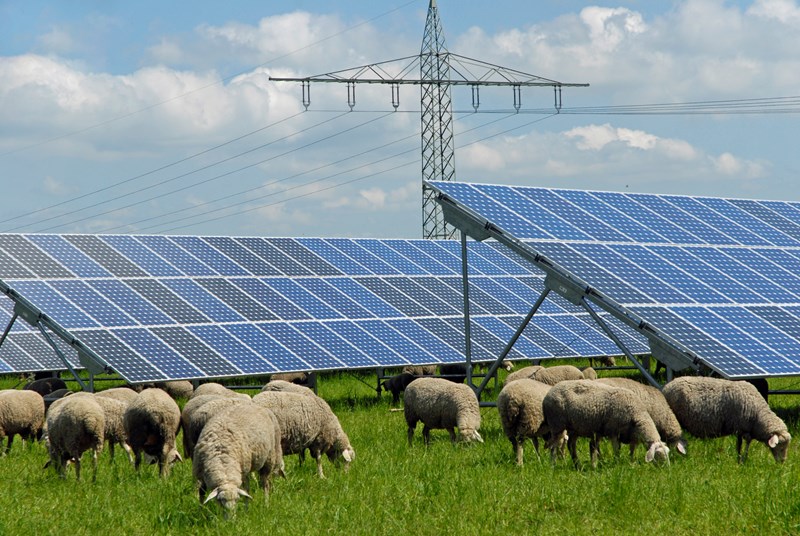
Solar farms taking New Zealand by storm
New Zealand is currently seeing another boom in the renewable energy sector but this time in the form of large scale solar farms. There is currently a land grab of existing dairy and grazing farms by national and international solar developers. This is partly due to the high New Zealand wholesale price of electricity and the New Zealand government setting a target of 100% renewable power generation by 2030. This is further compounded by the push for electrification of historical technology and the demand for EV vehicles. There are some significant benefits to landowners converting from existing farm activities to solar, including the security of long term leases with lucrative rentals. In addition to the lucrative leases, there is an opportunity for the landowners to graze sheep on the solar farm and receive an additional return. Conversely, there are some significant risks involved which landowners need to be made aware of, including the likeliness of the landowner not being able to return the land back to dairy farming at the expiry of the lease. We are seeing various approaches by developers in the documentation of solar farms in New Zealand. Generally, the solar project will initially be documented with a letter of intent / memorandum of understanding between the developer and landowner. This is then progressed to an investigation licence and option to lease (Option) or agreement to lease. The Option will usually include a payment for signing and a per hectare rate during the Option term. It will also include the developers conditions which would typically include due diligence, Overseas Investment Office (OIO) consent and sometimes a subdivision consent to enable a longer lease than permitted under the Resource Management Act (depending on the developer). The Option is negotiated side by side with the lease itself. We are also seeing some developers proposing easements in substitution of the more commonly used lease. When acting for a landowner, there are some really important questions / points which need to be addressed, including: Is the structure of the documentation fit for purpose? The lease and timing of existing leases in place; Rental (per hectare rate or linked to a percent of electricity generation). Rent reviews, which will generally be annual CPI / PPI increases and ratcheted. Understanding whether the permitted use is adequate for all intended purposes. The developer’s obligations (including maintenance). Whether a security bond for decommissioning the solar farm is being provided. Assignment and whether the developer can assign to a third party (ie. an investor / purchaser of the project ) with or without the landowners consent. Whether a Tripartite Agreement is required to be entered by the landowner, developer and the developer’s financier. Reinstatement obligations. Health and safety obligations. Landowner grazing rights. Termination rights (including early termination rights of the developer). Force majeure (unforeseen circumstances that prevent a party from fulfilling its obligations). If you have been approached by a developer or would like to understand more about large scale solar farming, Joel Murphy has first-hand solar development experience working in London for one of the world\'s largest solar developers and has negotiated multiple large scale solar farms throughout New Zealand for landowners. Please get in touch to discuss any solar matters.

National forestry standards are changing
The Government is seeking feedback on changes to how the National Environmental Standards for Plantation Forestry (NESPF) manage plantation and exotic carbon forests. Under the Emissions Trading Scheme (ETS) the forestry sector can earn (and then sell) carbon credits by planting exotic forests, which absorb carbon dioxide and contribute to meeting emissions reduction targets. This provides an economic incentive to plant more exotic forests, and the increasing price of carbon credits is driving rapid growth in afforestation. The NESPF sets regulatory controls on plantation forestry under the Resource Management Act but does not currently apply to exotic carbon forests. Essentially, plantation forests are forests that have been established for commercial purposes whereas exotic carbon forests are non-indigenous forests that are not harvested below a certain level of canopy cover – also known as permanent forests. These forests are planted to absorb carbon rather than for harvesting. The Government has raised concerns about the growth in exotic forests causing adverse environmental effects, including by converting farm land to forestry, reducing habitat for indigenous species, and increasing wildfire risk and the spread of wilding pines. To address these concerns, the Government is proposing the following changes to the NESPF: Expanding its coverage to exotic carbon forests. Controlling the location of afforestation for both types of forests. Improving wildfire risk management for both types of forests. Addressing some findings from the Year One Review of the NESPF. The latter includes enabling foresters and councils to better manage adverse effects in relation to wilding pines. Both plantation forests and exotic carbon forests have a risk of wilding pine spread however, as it stands, while both are subject to the requirements contained in regional pest management plans, only plantation forestry must meet the wilding pine requirements set out in the NESPF. You can review the proposed changes and lodge a submission at: National direction for plantation and exotic carbon afforestation | NZ Government (mpi.govt.nz). Submissions close 18 November 2022. Please do not hesitate to contact us for advice around what these changes mean for you or your business.

The Dirt: the New National Policy Statement for Highly Productive Land
The National Policy Statement for Highly Productive Land (NPS-HPL) has come out strongly in favour of protecting productive land and looks set to hold the line on this except in limited circumstances. The NPS-HPL will sit alongside other national policy statements such as the National Policy Statement for Freshwater Management and the National Policy Statement on Urban Development. It will be transitioned into the two new Acts replacing the Resource Management Act 1991 – the Spatial Planning Act and the Natural and Built Environments Act. For the primary sector, the NPS-HPL provides certainty into the future as it ensures that the most fertile and versatile land remains in the hands of farmers and growers and cannot be utilised for urban growth. For other sectors, the NPS-HPL will become a key consideration in consenting processes involving the rural environment. The NPS-HPL takes effect from 17 October 2022 and requires local authorities to protect and manage HPL to secure its availability for growing vegetables, fruit and other primary production. Regional councils must map HPL within the next three years in collaboration with territorial authorities and tangata whenua. The identification of HPL depends on the Land Use Capability (LUC) system, which classifies land in accordance with its capability to sustain productive use (with Class 1 being the most suitable). A New Zealand wide LUC map can be found here: https://ourenvironment.scinfo.org.nz/maps-and-tools/app/Land%20Capability/lri_luc_main. In general, land will be mapped as HPL if it: Is in a general rural zone or rural production zone; Is predominantly LUC 1, 2, or 3 land; Forms a large and geographically cohesive area; and Is not identified for future development at 17 October 2022. Until that mapping exercise is undertaken, land will be treated as HPL if it is zoned general rural or rural production and is LUC 1, 2 or 3 – unless it is identified for future urban development or subject to a notified plan change to rezone it to urban or rural lifestyle when the NPS-HPL comes into force. The NPS-HPL then sets strict standards for how HPL can be used. Essentially, any rezoning, subdivision, or use or development of HPL must be avoided unless it can fit within one of the limited exceptions. For use and development, these exceptions include that the activity has a functional or operational need for the use or development to be on HPL and is associated with the maintenance, operation, upgrade, or expansion of specified infrastructure. While “specified infrastructure” will encompass renewable electricity generation, there is notably no specific provision for the “construction” of this infrastructure, which means that the restrictions in the NPS-HPL will be a key consideration for developers of this infrastructure when selecting project sites. The NPS-HPL can be found here: https://environment.govt.nz/publications/national-policy-statement-for-highly-productive-land/. If you have any queries regarding the NPS-HPL and what this means for you or your business please do not hesitate to contact us.
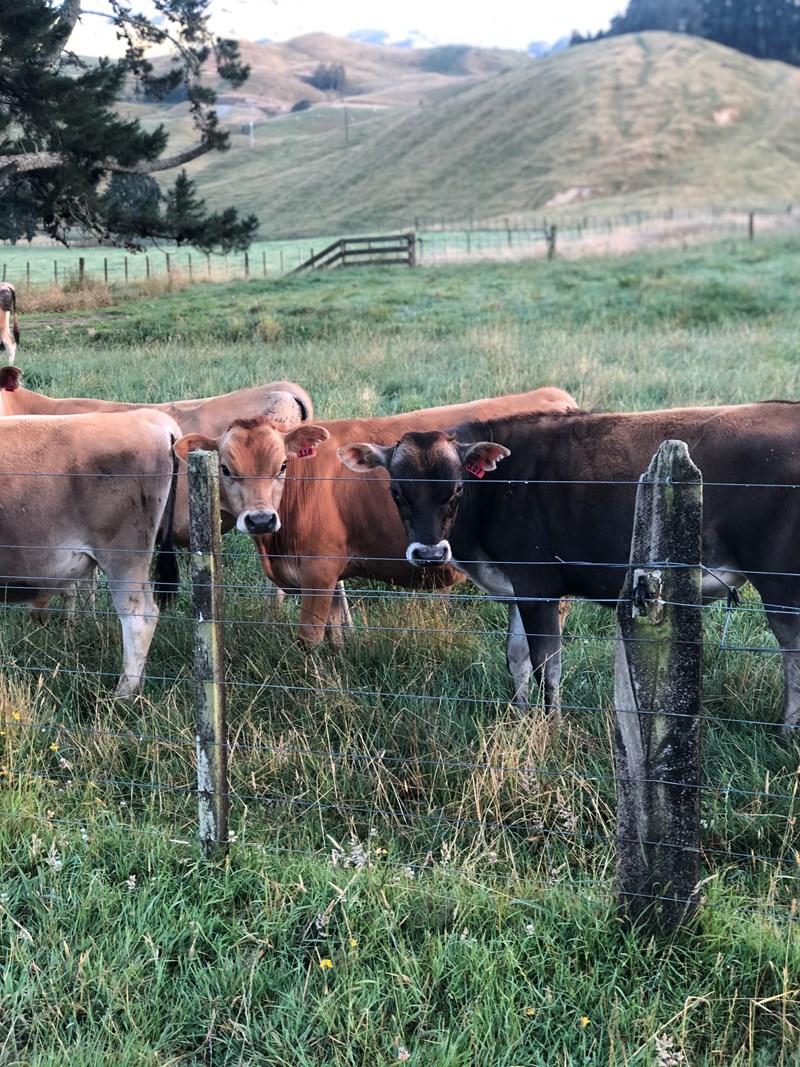
Amendments to the Intensive Winter Grazing Regulations
Further to our note in September 2021 about the proposed changes to the intensive winter grazing (IWG) regulations, these have now been finalised. This article outlines what the amendments to the IWG regulations mean for farmers.
As we are in the midst of winter, farmers are altering their farm practices to combat feed shortages that come with the winter months. For many farmers, this means incorporating the use of IWG.
IWG is the grazing of livestock on an annual forage crop at any time in the period that begins on 1 May and ends with the close of 30 September the same year. When done properly, IWG is an effective tool to ensure feed longevity. However, when done poorly, it can have serious negative effects on animal welfare and the environment.
IWG regulations were introduced in the National Environmental Standards for Freshwater 2020 (NES) as a part of the Essential Freshwater package. This package introduced a range of rules and regulations designed to protect freshwater and control high-risk practices.
Following an outcry from the rural community as to the practicality of the intensive winter grazing regulations, the Government released amendments to the regulations in April 2022. You can view the amendments here. The amendments were made under the guise of increasing practicality for farmers while effectively lifting environmental outcomes.
Key changes
The amendments seek to help protect the soil and waterways by placing greater importance on paddock selection. The key changes relate to:
Resowing annual forage crop paddocks;
Pugging;
Protecting and not cultivating or grazing critical source areas; and
Using land with a slope of more than 10 degrees.
Resowing annual forage crop paddocks
The set resowing date has been removed and replaced with a standard requiring the establishment of vegetative ground cover as soon as practicable after grazing.
Pugging
The amended regulations have had specific depth and area requirements around pugging removed. These have been replaced with a standard requiring reasonable practical steps to minimise adverse effects of pugging on freshwater.
Protecting and not cultivating or grazing critical source areas
The amended regulations focus on protecting critical source areas from annual forage crop cultivation. Anyone undertaking intensive winter grazing activities must protect critical source areas by ensuring all critical source areas:
Are left ungrazed;
Have vegetation as ground cover;
Are not used to grow forage crops.
Using land with a slope of more than 10 degrees
The regulations have been changed in relation to slope from a mean slope of 10 degrees to a maximum slope of 10 degrees.
Permitted Activity Requirements
Applying the above amendments, farmers can practice IWG as a Permitted Activity if the activity meets the following conditions:
The area used for IWG does not exceed 50ha or 10% of the farm, whichever is greater; and
The total area used for IWG is not greater than the maximum area used for IWG in any single season between 1 July 2014 and 30 June 2019;
Livestock are kept 5m from the bed of any river, lake, wetland, or drain, regardless of whether there is any water in it at the time (as per the Stock Exclusion Regulations);
The land used for IWG has a maximum slope of less than 10 degrees;
All reasonably practicable steps are taken to minimise the effects of pugging;
Vegetation is established as ground cover as soon as practicable after grazing;
All critical source areas are left ungrazed, have ground cover and are not used to grow forage crops.
If the IWG activity is unable to meet any of the above requirements, the farmer will require a new IWG consent.
Timeframes
The regulations introduced a reference period which is the period from 1 July 2014 and ended 30 June 2019.
Any new IWG activity, ie. IWG expanding the area above the maximum used in the reference period requires a resource consent now. If you think you need a resource consent for expanding your IWG activity, contact us and we can assist you in applying for a retrospective resource consent.
The amended regulations come into effect for existing IWG activity from 1 November 2022. While they do not impact the 2022 winter grazing season, those planning IWG for the 2023 season onwards, will need to become familiar with the IWG regulations and requirements. For a lot of farmers, planning for next year’s winter starts now.
Conclusion
As stated above, while IWG is a valuable management tool, it can be a risky activity and the environmental risks of IWG require proactive and practical management. We anticipate that even with these amendments, several farmers will not be able to undertake IWG without obtaining a resource consent. This will be particularly true for farmers wanting to undertake IWG on slopped land.
Failure to comply the IWG regulations, or the conditions of a consent is an offence and may result in enforcement action being taken by the relevant regional council Farmers that find themselves in breach of the IWG regulations.
Our rural law team can provide you with advice on how to interpret the regulations to ensure that your IWG practices are compliant. We are also able to provide you advice on the regulatory process should you find yourself in some strife.

Wetlands: national direction changes again
The Ministry for the Environment has released an exposure draft of proposed changes to the National Policy Statement for Freshwater Management 2020 (NPSFM) and the Resource Management (National Environmental Standards for Freshwater) Regulations 2020 (NESF).
These changes make amendments to the wetland provisions, along with what the Ministry describes as technical or clarificatory amendments to other provisions.
Wetland provisions
By way of background, the NPSFM and NESF set out national direction for managing wetlands. At a conceptual level, the NPSFM provides policy direction for regional planning, and the NESF regulates specific activities that are carried out in and around natural wetlands.
The Ministry consulted on amendments to these wetland provisions late last year, and has now drafted extensive changes to both the NPSFM and the NESF. These changes include:
Biosecurity: Inserting biosecurity provisions in both the NPSFM and NESF.
Natural wetlands in the NPSFM: Changing the definition of “natural wetland” in the NPSFM, including by amending the exceptions for both constructed wetlands and pasture; and inserting exceptions to natural inland wetland requirements in the NPSFM for urban development (which includes specific mention of urban development in Tauranga), quarrying, mining, and landfill and cleanfill.
Aquatic offsetting: Inserting principles for aquatic offsetting and aquatic compensation into the NPSFM.
NESF activities: Amending the activity status standards, including those around restoration, scientific research, wetland utility structures, and specified infrastructure, and inserting new consent pathways for quarrying, landfills and cleanfill areas, urban development, and mining.
Other changes
Some of the other changes include:
Limits: Inserting a definition of “environmental flows and levels” into the NPSFM, and clarifying that they are a type of “limit”.
Maintain/improve: Amendments to the NPSFM so that the policy direction to manage freshwater to maintain/improve the health and well-being of water bodies and freshwater ecosystems is not limited to the National Objectives Framework.
River beds: Amendments throughout the NPSFM so that the provisions around loss of river extent and values (including the effects management hierarchy) apply only to the loss of river bed extent and values.
Nutrients: Amendments to the NPSFM provisions for attributes affected by nutrients.
Fertiliser: Changes to the definition of synthetic nitrogen fertiliser in the NESF so that the exception for compost, soil treatment or fertiliser only applies where it is wholly derived from plant or animal waste or residue.
Submissions
Feedback is being sought until 10 July 2022 and more information can be found at https://consult.environment.govt.nz/freshwater/npsfm-and-nesf-exposure-draft/.
Please get in touch if you would like advice around how these changes may affect you or your organisation.

The Emissions Trading Scheme: Should Exotic Trees be Treated as Carbon Sinks?
The Government is concerned over new exotic forests being treated as carbon sinks under the Emissions Trading Scheme (ETS).
By way of background, the ETS was implemented under the Climate Change Response Act 2002 and is a key tool for ensuring that New Zealand meets its domestic and international climate change targets.
Businesses involved in the scheme are called “participants”, and they include businesses that joined on both a compulsory and voluntary basis. Participants can be from the forestry, mining and petroleum, waste disposal, agriculture, or industrial production industries.
The ETS puts a price on emissions by creating “NZ units” (NZU) and then charging participants one NZU for each metric tonne of carbon dioxide (or equivalent greenhouse gas) emitted. NZUs can be auctioned, allocated, purchased, gifted and traded and as of February 2022 the fixed price for one NZU was over $80.
Participants that absorb greenhouse gases (“carbon sinks”) are gifted NZU, which are often sold to other participants.
As trees are the main carbon absorbers, the bigger the forest, the more NZU forestry participants can be gifted. There are requirements around what constitutes “forest land” under the ETS, and the way forest land is treated depends on whether or not it was established post 1989. This date is based on the Kyoto Protocol, which sets 1 January 1990 as the baseline for net global emissions.
Forests established post 1989 are considered new carbon sinks and (subject to some conditions) can be registered with the ETS and earn NZU.
The Government has raised concerns over the planting of exotic trees (such as radiata pine) on land that had no previous tree cover (called “afforestation”) to gain NZUs. While the Government wants to encourage afforestation, permanent exotic forests can displace pastoral farming, production, and indigenous forests.
To manage these issues, the Government is currently consulting on opportunities for improving incentives for indigenous afforestation, and whether to prevent exotic forests from registering in the permanent post-1989 category of the ETS.
The Government is also consulting on how a new carbon accounting method applies to remote and marginal land for harvesting, and is separately consulting on whether local councils should be allowed to regulate where exotic forests are planted.
More information about these proposals can be found at: https://www.mpi.govt.nz/consultations/managing-exotic-afforestation-incentives.
Submissions are open to anyone with an interest in forestry, especially Māori land owners. Submissions to the Ministry of Primary Industries open 14 March 2022 and close 5pm on 22 April 2022.

Mandatory Farm Debt Mediations – what you need to know
A new law has come in affecting how creditors can take enforcement steps against borrowers and guarantors of farm debts.
The Farm Debt Mediations Act 2019 (FDMA) came into force in 2020, which prevents secured creditors from taking enforcement action in relation to farm debts without taking certain steps.
What is a farm debt?
A “farm debt” is defined as being:
a debt owed by a farmer (a person involved in a primary industry or a debtor where the debt was incurred to conduct a primary production business) as principal debtor or guarantor;
incurred for the purpose of conducting a primary production business (eg. horticulture, agriculture, aquaculture, including businesses such as sharemilking but does not include forestry, mining or providing labour/materials to a primary production business) or related activities; and
secured wholly or partly in farm property (being any property used in connection with a primary production business. Property can include vehicles, animals, resource consents)
What is an enforcement action?
“Enforcement action” includes appointing a receiver, serving notice under s119 of the Property Law Act 2007 to exercise powers of sale, taking possession or assuming control of the farm property or applying to liquidate or bankrupt the farmer.
A letter advising of a default and reminding the debtor to make payment is not an enforcement action.
When can ‘enforcement action’ be taken by a creditor?
A secured creditor can only take enforcement action in relation to the farm property when either:
an enforcement certificate is in force in relation to the relevant farm debt. A creditor can apply to MPI for a certificate if the farmer declined to attend mediation or the creditor attended mediation with the farmer in good faith. An enforcement certificate lasts for 3 years; or
the parties have entered into a mediation agreement in the past 3 years.
If any of enforcement steps are taken without an enforcement certificate or mediation agreement, the enforcement steps will be void.
If the farmer obtains a “prohibition certificate”, a creditor cannot take any enforcement action for 6 months. The farmer can apply to MPI for a prohibition certificate if the creditor declined to mediate or did mediate but not in good faith.
Action could be taken against non-farm property (of the farmer) secured under a farm debt, or potentially against farm property (of the farmer) if the farmer is insolvent or subject to insolvency proceedings. However, action cannot be taken against a guarantor in relation to any kind of property, farm or non-farm unless an enforcement certificate or mediation agreement is in place.
If there is an urgent need to protect a creditor’s interests, the creditor can apply to the High Court to appoint a receiver.
Mediation
Generally, farmer and a creditor can both request mediation, although a farmer can request one at any time and the creditor can only request one once the farm debt is in default. The mediation process is confidential. There are specific formalities and procedures under the FDMA, including that:
the request must be in writing;
the other party (‘respondent’) must respond to the mediation request within 20 working days. If they do not reply, they are deemed to have declined mediation;
if the respondent responds by declining to attend, they must set out the reasons why;
a creditor must agree to mediation unless there is good reason; and
unless the parties agree, the mediation must occur within 60 working days of the request.
A farmer can only be asked to contribute up to $2,000 towards the cost of the mediator, and a creditor must meet it own costs of the mediation process. The legislation indicates that any of the creditor’s mediation related costs cannot be recovered from the farmer in any way, which would override standard contractual cost indemnities.
The parties must mediate in “good faith”. If a creditor declines to attend mediation without good reason or without setting out its reasons, that will be evidence of ‘bad’ faith. The legislation also indicates that a creditor refusing to reduce or forgive a debt, or alter the loan terms, could be evidence of bad faith, but not on its own.
What now?
The FDMA applies to all farm debts, irrespective of when the debt was incurred. The FDMA cannot be contracted out of. As this legislation is brand new, it has not yet been interpreted by the Courts, so it will be interesting to see it work in practice. Holland Beckett has expertise in rural law and can advise you on the impact of the FDMA on any farm debt, and assist you to navigate the mediation and enforcement process.

Purchasing a Kiwifruit Orchard
Purchasing a kiwifruit orchard comes with lots to think about and plenty of due diligence to undertake. Often the purchase will be conditional on these further investigations, so what is important to consider?
For most orchardists, water and compliance are key considerations.
Often water is sourced from a bore, either on the land itself or from neighbouring properties pursuant to an easement or water supply scheme. However, to take water for irrigation or frost protection, you not only need the legal right to convey the water from its source potentially across your neighbours\' land but also consider the terms of this easement and rules around how you are to share pump maintenance and running costs with your neighbours. As well as ensuring there is the appropriate Resource Consent to draw either surface water or bore water at a sufficient rate to irrigate or provide the necessary frost protection. Resource Consents have strict allowable flows and volumes and require metering and monitoring to ensure compliance. In some cases water storage on site is necessary to make sure that sufficient volumes of water are readily available in times of peak demand without breaching the flow limits.
In addition to water, overall compliance by the vendor is important, such as not exceeding their licensed plantable area, ensuring Global Gap compliance, maintaining the required spray programme and diary to Zespri’s export standard, etc.
Another big factor is the ownership of the crop that may be on the vines or could have been picked. Special care is needed when a settlement is likely to take place around picking time as the treatment of hanging fruit can be different from picked fruit from a tax point of view. Most agreements will clearly state who retains ownership of the current crop and who is to benefit from the sale proceeds, even if it is already (or will be by settlement) picked and in the coolstore. With Zespri’s trailing payment method over the year following the picking of a crop, there can be significant cashflow impacts for a buyer if they don’t also buy the crop, as they may not get any income from the orchard until the following year\'s crop, starting up to 12 months later. In this case sufficient finance would need to be in place from the outset to fund orchard expenditure until income is received. Ultimately the ownership of the crop has an impact on the overall price paid for the orchard and a purchasers funding requirements.
Other considerations include:
Legal Title and any other registered interests or easements on the land
Licence Ownership
Any ongoing management agreements
Your structure and ownership entity
KPIN transfer
Chattels and Improvements and the apportionment of values
Zespri shares
and many more.
If you are contemplating purchasing your first orchard or expanding your existing operations, please contact us with any queries before entering into an agreement.
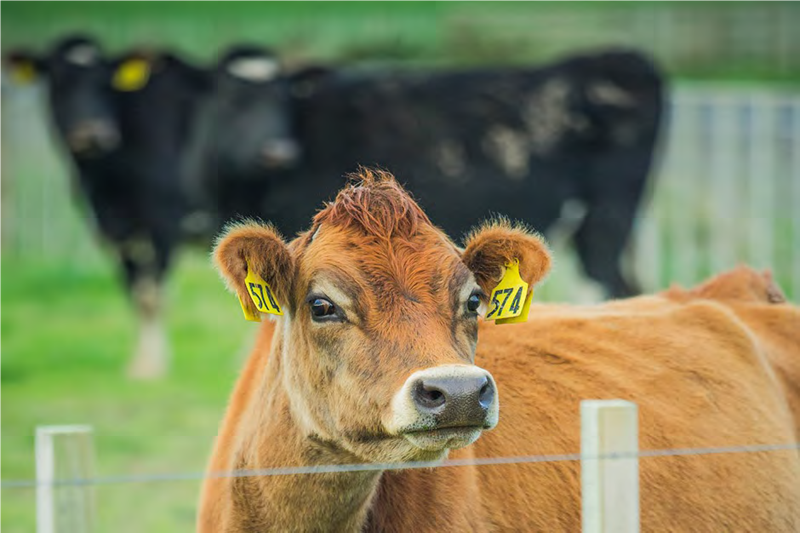
Intensive winter grazing regulations made more practical
The Government is proposing changes to intensive winter grazing regulations in order to address practical challenges raised by stakeholders. These regulations are set out in the Resource Management (National Environmental Standards for Freshwater) Regulations 2020 (NESF), which were introduced as part of the Government’s Essential Freshwater reforms. A Discussion Document setting out the proposed changes can be found here: Intensive winter grazing regulations: Proposed changes - Ministry for the Environment Citizen Space - Citizen Space. The regulations for intensive winter grazing were set to take effect from 1 May 2022. Under these regulations, farmers can only carry out intensive winter grazing without a resource consent if they comply with a series of default conditions, or they have a certified freshwater farm plan in place. Since the freshwater farm planning process is yet to be rolled out, meeting the default conditions could be the only pathway for some time. Proposed changes The Government’s proposed changes try to improve these default conditions, as they have been criticised for being unworkable in practice. The proposed changes: Amend the 10 degrees slope threshold from a mean paddock slope to a maximum slope, which is easier to estimate. Remove the specific limits on pugging (labelled as impractical) and instead require farmers to take reasonably practicable steps to manage the effects of pugging on freshwater. Exclude sub-surface drains from the definition of drains, so that farmers do not have to maintain a stock buffer from sub-surface drains that cannot be practically mapped. Change the requirement for farmers to resow crops after winter by a set date to “as soon as practicable”, as unpredictable weather makes meeting a set date impractical, and clarify that farmers do not have to resow crops if they have established ground cover in other ways. Introduce a new requirement to keep critical source areas uncultivated and ungrazed. However, not all criticisms have been adopted. Some stakeholders recommended increasing the 10 degrees slope threshold, and changing the condition limiting intensive winter grazing to 50 hectares or 10 percent of a farm’s area. In terms of timing, the Government proposes to delay implementing the intensive winter grazing regulations by six months, so that they take effect on 1 November 2022. Submissions Submissions are being accepted until 7 October 2021. Consultation is also open on: Changes to the low slope map in the Resource Management (Stock Exclusion) Regulations 2020 – closing 26 September 2021. Proposed regulations for freshwater farm plans – closing 26 September 2021. Changes to natural wetland provisions in the NESF and National Policy Statement for Freshwater Management – closing 27 October 2021.

Natural Wetland provisions are changing
The Government is proposing changes to natural wetland provisions in the Resource Management (National Environmental Standards for Freshwater) Regulations 2020 (NESF) and the National Policy Statement for Freshwater Management 2020 (NPSFM). Both documents were introduced as part of the Government’s Essential Freshwater reforms and introduced strong regulatory protection for natural wetlands. The proposed changes respond to feedback from stakeholders around New Zealand and a Discussion Document setting out the proposed changes can be found here: Managing our wetlands - Ministry for the Environment Citizen Space - Citizen Space. Proposed changes As pasture can get waterlogged after rainfall and be treated as wetland, the Government sought to explicitly exclude heavily modified pasture from the definition of “natural wetland” in the NPSFM. Following feedback that the current definition of natural wetland is problematic, the Government now proposes amendments to that definition to ensure that “any area of pasture that has more than 50 percent ground cover comprising exotic pasture species or exotic species associated with pasture” is not treated as a natural wetland. The NESF sets out standards for restoration activities in and around natural wetlands, which have prevented some restoration work from being carried out. The provisions also do not currently provide for biosecurity or maintenance activities. To address these issues, the Government proposes to bring maintenance work into the restoration provisions, make it easier to carry out some weed control and pest management activities, and permit wetland restoration and maintenance if carried out under a council-approved wetland management strategy. The current framework also provides resource consenting pathways for some activities to occur in or around natural wetlands. The Government proposes to introduce new consenting pathways for quarrying, landfills, cleanfills, managed fills and mining activities, which are all recognised as having some restrictions on where they can take place. The Government also proposes to amend the urban development consenting pathway to provide for more housing and urban development. Essentially, the Government is trying to balance preserving natural wetlands with providing for appropriate use and development. Submissions Submissions are being accepted until 27 October 2021. Consultation is also open on: Changes to the low slope map in the Resource Management (Stock Exclusion) Regulations 2020 – closing 26 September 2021. Proposed regulations for freshwater farm plans – closing 26 September 2021. Changes to intensive winter grazing regulations in the NESF – closing 7 October 2021.

More Essential Freshwater Reforms: Freshwater Farm Plans
The Government has proposed new regulations for freshwater farm plans. These regulations form part of the Government’s Essential Freshwater reforms, which are intended to achieve the following objectives: halt further degradation of waterways; make material improvement in the health of waterways within five years; and restore degraded waterways within a generation. The Essential Freshwater reforms also include the following elements: A new plan-making process under the Resource Management Act 1991 (RMA). National Policy Statement for Freshwater Management 2020 (NPSFM). Resource Management (National Environmental Standards for Freshwater) Regulations 2020. Jobs for Nature funding support towards improving the health of waterways. Resource Management (Stock Exclusion) Regulations 2020 (consultation on proposed changes is currently open). A Discussion Document for the proposed freshwater farm plan regulations can be found here: Freshwater farm plan regulations: Discussion document | Ministry for the Environment. Background In 2020 Part 9A was added to the RMA, which created freshwater farm plans as a new legal instrument. Prior to this, several regional councils had already introduced a system for farm environment plans, and the Government estimates that 75% of farmers and growers have already implemented some form of farm plan. The new requirements for freshwater farm plans are intended to build on this existing work to better control the adverse effects of farming on freshwater and freshwater ecosystems. These plans will be compulsory for some farms, including where 20 or more hectares are used for arable or pastoral land use, 5 or more hectares are used for horticultural land use, or where prescribed by regulations. Regional councils manage freshwater through rules and resource consents, and their regional plans need to be amended to implement the latest NPSFM. While regional plan rules need to be reflected in freshwater farm plans, the new system is intended to reduce the reliance on resource consent processes and stringent plan rules (where appropriate), and allow farmers and growers to tailor freshwater planning solutions to their individual farm and the surrounding catchment. Some freshwater farm plans will be set up before regional councils have completed the latest freshwater planning process, which means freshwater farm plans will eventually need to be updated. Freshwater farm plans must be certified and the farm must be audited for compliance with the plan. The RMA specifies what freshwater farm plans must contain, which includes identifying adverse effects on freshwater and freshwater ecosystems, and specifying clear and measurable requirements that are appropriate for avoiding, remedying, or mitigating those adverse effects. It also includes demonstrating how any outcomes prescribed in regulations are to be achieved, along with complying with any other requirements in regulations. Proposed regulations The proposed regulations are expected to come into force in the first half of 2022 and then freshwater farm plans will be gradually rolled out across New Zealand, starting with more degraded areas. The proposed regulations will specify how freshwater farm plans should assess the adverse effects of farming activities on waterways through risk/impact assessments, and how actions to avoid, remedy or mitigate those adverse effects should be identified. The proposed options essentially range from including general or high-level requirements (along with separate guidance) that allow a more tailored approach to farm management, to prescribing more detailed methodology and standards. The Government has also proposed including three regulated outcomes, covering: catchment values and context; ecosystem health; and farm practice. This means that freshwater farm plans will need to demonstrate how these outcomes are to be achieved. Two alternatives are proposed for how the regulated outcomes should be included in the proposed regulations: stating them at a general level with separate guidance for how they can be achieved; or specifying in detail how they need to be achieved in the proposed regulations. The proposed regulations will also prescribe base information that needs to be included in freshwater farm plans, such as mapping information and farm ownership. More information around how these proposals would be included in the regulations can be found in the Discussion Document. In addition to the matters discussed above, the Government is also consulting on other aspects of the proposed regulations, including timing and rollout, the certification and auditing process, and enforcement mechanisms. Regarding enforcement, the proposed regulations will include offences for non-compliance with both Part 9A of the RMA and the regulations, along with infringement fees, as proposed below: $1,000 - $1,500: Farm operator does not have a certified farm plan within the specified timeframe. $1,000 - $1,500: Farm operator does not have an audited farm plan within the specified timeframe. $1,000 - $1,500: Farm operator does not seek re-certification of their freshwater farm plan in line with the re-certification triggers. $1,000 - $1,500: Farm operator does not implement actions in line with the agreed timeline. $500: Farm operator does not lodge an addendum or update details. The proposed regulations will be included in the integrated farm planning network, so that the various regulated requirements (including freshwater farm plans and green-house gas reporting) can be incorporated into a “whole of farm” planning process. The Government has indicated that the freshwater farm planning process will be carried over into the proposed National and Built Environments Act (which they propose will replace the RMA), and any existing freshwater farm plans will be addressed through transitional provisions. Submissions Submissions are being accepted between 26 July and 12 September 2021. Consultation is also open for the Government’s proposed changes to the low slope map in the Resource Management (Stock Exclusion) Regulations 2020, and the Government will also soon ask for feedback on changes to the intensive winter grazing rules.

More Essential Freshwater Reforms: Stock Exclusion Regulations
The Government has proposed changes to the low slope map in the Resource Management (Stock Exclusion) Regulations 2020 (Stock Exclusion Regulations). These regulations form part of the Government’s Essential Freshwater reforms, which are intended to achieve the following objectives: halt further degradation of waterways; make material improvement in the health of waterways within five years; and restore degraded waterways within a generation. The Essential Freshwater reforms also include the following elements: A new plan-making process under the Resource Management Act 1991 (RMA) National Policy Statement for Freshwater Management 2020 (NPSFM) Resource Management (National Environmental Standards for Freshwater) Regulations 2020 Jobs for Nature funding support towards improving the health of waterways. Proposed regulations for freshwater farm plans (consultation is currently open) A Discussion Document on the proposed changes to the Stock Exclusion Regulations can be found here: Stock exclusion regulations: Proposed changes to the low slope map: Discussion document | Ministry for the Environment. Background The Stock Exclusion Regulations incorporate a map identifying low slope land, which is any land parcel in New Zealand with an average slope of 10 degrees or less. Under the Stock Exclusion Regulations, beef cattle and deer on low slope land must be excluded from lakes and wide rivers (except when crossing) and beef cattle must only cross these waterbodies using a dedicated bridge or culvert (unless actively driven across under supervised and no more than twice a month). All stock (beef cattle, dairy cattle, dairy support cattle, deer or pigs) on low slope land must also be excluded from any natural wetland that is 0.05 hectares or more. Proposed changes Since the Stock Exclusion Regulations were introduced, stakeholders have raised concerns around the low slope map capturing many areas of high slope land, and extensive farming operations in the high country. It also appears that the map does not capture all areas of low slope land. The Government proposes amending the low slope map in the following ways: Using a more advanced mapping methodology called “local terrain averaging”, which addresses issues associated with averaging slope across land parcels. Applying the new low slope map to areas with an average slope up to 5 degrees, rather than 10 degrees, and managing areas with an average slope between 5 and 10 degrees through freshwater farm plans. Introducing a 500m altitude threshold so that land above 500m is managed through freshwater farm plans. Removing tall tussock and depleted grassland areas from the low slope map, as these areas are unlikely to be highly stocked and can be managed through freshwater farm plans. Overall, this will reduce the area captured by the low slope map from 8.2 million hectares to 5.2 million hectares. The revised low slope map can be found here: Stock Exclusion Map Viewer (arcgis.com). Submissions Submissions are being accepted between 26 July and 12 September 2021. Consultation is also open for the Government’s proposed regulations for freshwater farm plans, and the Government will also soon ask for feedback on changes to the intensive winter grazing rules.

New Directions and New Name for Resource Management
The Government has released an ‘exposure draft’ of the National Built Environments Act (NBA), intended to replace the Resource Management Act 1991 (RMA) which has, for many years, been held responsible by developers and environmentalists alike for failing to adequately and effectively manage our natural resources. The release of the exposure draft is a novel process, with the draft being released for initial consultation before it is introduced to parliament. In reality, what has been released is only 20 pages of the NBA which, when final, will be much longer (the RMA is 835 pages long). There are also still many details missing from the draft, including what changes will occur to consenting, but it does include some key provisions including the equivalent ‘part 2’ provisions. The draft largely follows the recommendations set out in the Randerson Report, released in August last year. In terms of key changes, we examine three in this article: 1. Change in purposeThe purpose of the RMA is sustainable management of natural and physical resources. That changes in the NBA, with the new purpose focused on enabling Te Oranga o te Taiao to be upheld and enabling people and communities to use the environment in a way that supports the well-being of present generations without compromising the well-being of future generations. Te Oranga o Te Taiao incorporates: the health of the natural environment; the relationship between iwi and hapū and te taiao (the environment); the interconnectedness of all parts of the natural environment; the essential relationship between the health of the natural environment and its capacity to sustain all life. Many of the aspects of the ‘purpose’ of the NBA are similar to those of the RMA, but the relationship between Māori and the environment is elevated to become part of the purpose of the NBA. The new purpose also emphasises the interconnectedness of the environment and it will be interesting to see how this influences future policy direction from the government. Section 6 of the NBA also elevates the Treaty of Waitangi, both in its position within the legislation and in the substantive requirement. The NBA will require all persons to give effect to the principles of te Tiriti o Waitangi, rather than take them into account. 2. Environmental outcomes and limits The matters of national importance and other matters contained in Section 6 and 7 of the RMA have been replaced with the concepts of environmental limits and outcomes. Limits can be set to protect both the ecological integrity of the natural environment and human health, and can be formulated as a minimum biophysical state or a maximum amount of harm permitted to the natural environment or a specified part of it. Limits must be prescribed for certain matters, in the National Planning Framework and in plans where that is the direction of the national planning framework. Environmental outcomes must also be included to assist in achieving the purpose of the Act, and all plans must promote the environmental outcomes listed which include protecting, restoring and improving a number of specified parts of the environment. The inclusion of ‘improvement’ in many of the outcomes is a development, with the RMA instead focused on protecting, preserving and maintaining. This is likely to have a significant flow on effect to plan provisions and ultimately what is able to be consented and conditioned as part of a consent. The National Planning Framework (the Framework) is a new requirement of the NBA. The process for preparing the Framework is not included in the exposure draft but the Act states that there must at all times be a Framework, for the purpose of providing integrated direction on matters of national significance and matters where consistency across the country or parts of it is desirable. The Framework will be in the form of regulations and must cover a number of topics including housing supply and greenhouse gas emissions. Interestingly, the Framework must also include provisions to assist with resolving conflicts between the environmental outcomes included in the NBA. The NBA places significant emphasis on the Framework, both to set much of the policy direction for New Zealand and resolve conflicts between the various priorities of the NBA. The result is that the various parts of the Framework are likely to be more powerful than current national policy statements, and as such are likely to take a long time to formulate and will inevitably be highly controversial. 3. Regional PlansAs was signalled by the Randerson Report, the exposure draft includes reference to a new process for plan making, with one plan required for each region. Each plan will be made by a regional planning committee which will approve or reject recommendations made by an independent hearings panel after the panel considers submissions on the plan. Although not confirmed by the exposure draft, it is likely that the Randerson report’s recommendation that appeals on this process are limited to points of law will be followed. Each planning committee will be made up of one person to represent the Minister of Conservation, mana whenua representatives and one person nominated by each local authority within the region. While the exposure draft will be heavily scrutinized, submitted on and likely subject to some substantial changes in the coming months, it is fascinating to finally see the base of what will form the next phase of New Zealand’s resource management system. Submissions on the draft are expected to open shortly, and there will be an initial Select Committee Inquiry before findings are reported back to the House and this will inform further policy development. If you have any questions on the draft, or would like any advice please do not hesitate to contact our Resource Management (or should we say NBA) team.
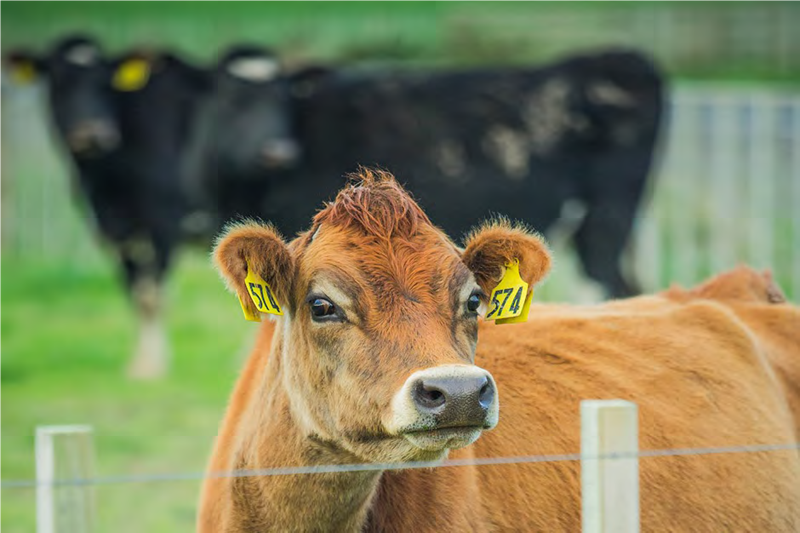
Stock to be excluded from NZ waterways
Photo from : Ministry for the Environment. 2019. Action for healthy waterways – A discussion document on national direction for our essential freshwater.
The Ministry for the Environment have released proposed regulations to exclude stock from waterways. The proposed Regulations are part of a wider programme that MfE is implementing to create healthier waterways, and sit alongside a draft National Policy Statement for Freshwater Management and Proposed National Environmental Standards for Freshwater.
Stock exclusion from waterways has been a conversation surrounding the agricultural industry for some time, and until now action has been by way of a dairy industry-lead, voluntary initiative, “The Sustainable Dairying: Water Accord” in July 2013. This required signatories to exclude dairy cattle from significant waterways and wetlands, with the effect of 98% of signatories excluding dairy cattle from waterways after five years of implementation.
This month MfE released its proposed regulations to require stock exclusion (ie. cattle, pigs and deer) from wetlands, lakes and rivers from 2021. The Regulations are proposed to lower levels of the four main contaminants affecting waterway health (phosphorous, sediment, nitrogen and faecal matter including E. coli). Sheep and goats are not included in the Government’s proposal on the basis that they do less damage to streams and rivers.
Larger water bodies will be dealt with by regional councils while farm plans will be used to create bespoke solutions for smaller streams and drains, although the regulations will only target water bodies that are more than one metre wide. The regulations will be made under the Resource Management Act 1991, therefore regional councils will be tasked with monitoring and enforcing compliance.
MfE is working with the public to develop the regulations and seek feedback on:
The degree of slope used to map low-slope land (non low-slope land only be regulated if classified as a high-risk pastoral activity);
Potential methodologies for calculating carrying capacity;
How large setbacks (space between the fence and waterway) should be and how it should be measured; and
Barriers farmers may face in meeting requirements.
The official closing date for submissions is Thursday 17 October 2019 at 5pm. However, submissions will be accepted for a further two weeks beyond that date, until 31 October 2019: https://submissions.mfe.govt.nz/consultations/essential-freshwater-f483240c-4b48-4713-acaa-539915e31f4e/make-a-submission











